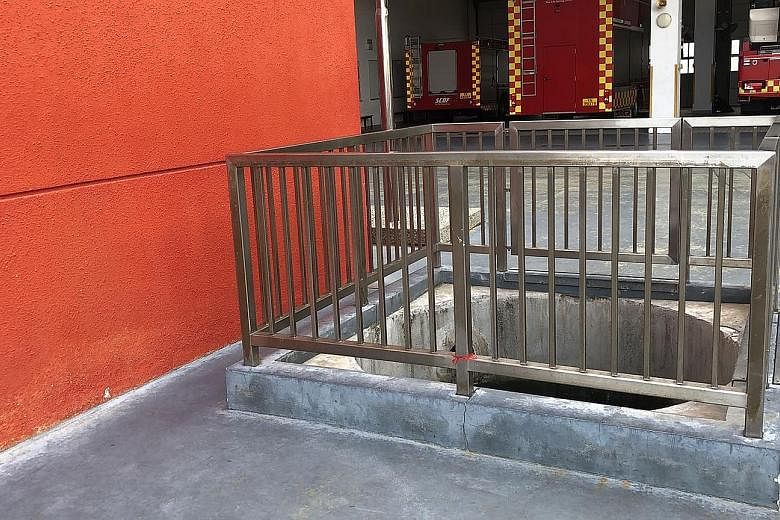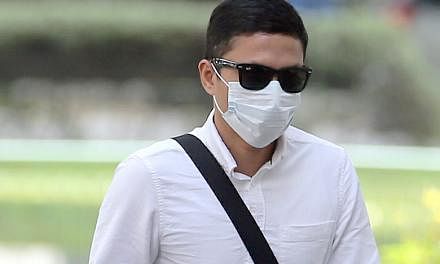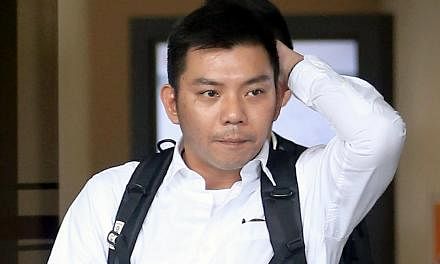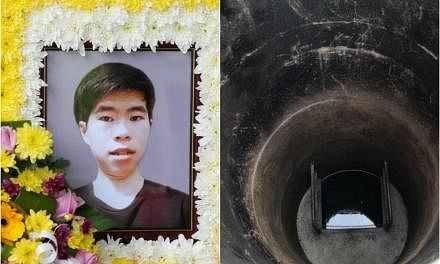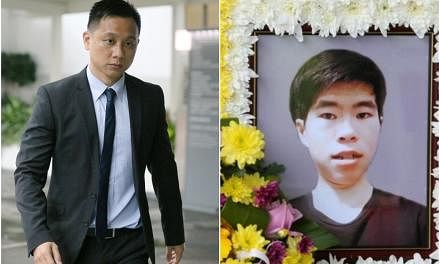When entering a pool of water, a non-swimmer might not know to breathe in before going in, and to exhale slightly while submerged, and as a result inhale water.
It is also possible that being submerged in a dark and confined space, like a fire station pump well, can cause one to lose his bearings.
Forensic pathologist George Paul was pointing this out as he testified yesterday in the ongoing trial of two Singapore Civil Defence Force commanders linked with the drowning of full-time national serviceman (NSF) Kok Yuen Chin.
Dr Paul, who did the autopsy on Corporal Kok, said that being submerged in the pump well could have been dangerous even for a swimmer. "Instead of surfacing, you might go in the opposite direction," he said, adding that this was based on conjecture.
He also said one would react differently if entering a body of water unexpectedly as it can result in a startled "inhalatory response", where a person breathes in water.
On May 13 last year, Cpl Kok was pushed into the Tuas View Fire Station's pump well as part of activities to mark the completion of his national service. In the autopsy report dated May 14, Dr Paul stated that the 22-year-old died of drowning.
The two officers on trial - Kenneth Chong Chee Boon, 38, a lieutenant, and Nazhan Mohamed Nazi, 40, a first senior warrant officer - were rota commander and deputy rota commander, respectively, on the night of the incident.
Chong and Nazhan were each charged with aiding a rash act that caused grievous hurt by illegal omission. They had allegedly failed to prevent a group of officers from making Cpl Kok enter the pump well, thereby endangering his life.
Testifying on the fifth day of the trial, Dr Paul said there is a difference between how a swimmer and a non-swimmer handles himself when entering a body of water.
It had been earlier mentioned in court that the NSF did not know how to swim and had told this to at least one of his rota mates.
Dr Paul noted that besides physical signs that showed Cpl Kok had drowned, the NSF had small injuries on his limbs and face and larger bruises on the back of his head. Some of these, he said, could have come about during a struggle or through impact.
Plant matter was found during a microscopic examination of Cpl Kok's lungs. "This was certainly not clean water, and such water can have an irritant effect, which could compound respiratory distress," said Dr Paul.
The prosecution also showed him a video taken on the night of the incident that showed a close-up of Cpl Kok being pushed into the well. Dr Paul observed that while Cpl Kok had likely fallen in feet first, it was also possible he could have bent over so his head pointed downwards and this could have contributed to his head injuries.
When asked whether there was still the risk of drowning if the NSF had not been pushed and had gently lowered himself into the well, Dr Paul said one could still drown if he is not used to water rushing into his nose or does not know to exhale while submerged.
During cross-examination, Chong's defence lawyer asked if it would have been less risky if there had been a contingency plan for someone to pull the person out as soon as he experienced difficulty. That day, an officer who was a swimming instructor had been told to be prepared in case things go awry.
Dr Paul said he was not sure if this would have been effective as the person might have been struggling and the instructor himself would have been trying to stay afloat, coupled with the confined space of the well. "I can only speculate that the swimming instructor might not have added much," he said.
The trial continues on Monday.

